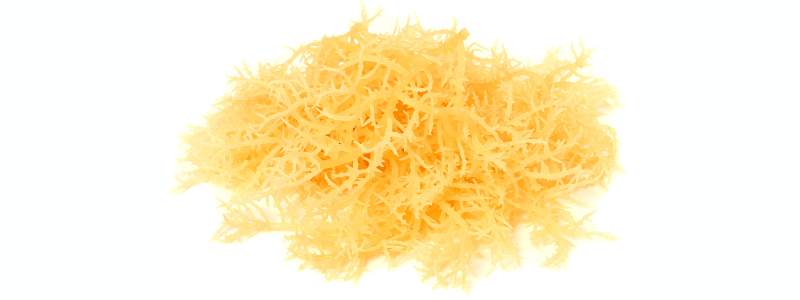Seaweed or marine algae belong to a large group of autotrophic organisms. They can be unicellular (microalgae or phytoplankton) or multicellular (macroalgae) with sizes ranging from 0.2-2.0 microns up to 60 m, respectively. Their reproduction occurs through simple division and due to the simplicity of their structure, they tend to grow faster than any other plant. Therefore, they are characterized as the most productive plants on the planet (Marsall, 2007):
- Compared to traditional oilseeds, algae can produce five times more biomass per hectare.
There are about 320,500 species of algae.The amount of cultivated or native macroalgae used in industry during recent years rounds up to nearly 7.5-8 million tons per year (Becker, 2007).
Nutritional composition of algae
The nutritional value of algae depends on their size, digestibility, presence of toxic substances and chemical composition (Becker, 1994).
Algae are a remarkable source of protein, with a content of 10-15% in macro-algae (Oliveira et al., 2009) and 28-71% in microalgae. In addition, the content of certain amino acids such as lysine, methionine, tryptophan, threonine, valine, histidine and isoleucine is comparable to that of eggs or soybean seeds. [register]
- Protein digestibility may vary depending on: algae species, time of year and the presence of phenols or polysaccharides, as well as the animal species to which they are administered (Goni et al., 2002).
Fleurence (1999) observed that the protein content in algae was highest at the end of the winter months and lowest during the summer months.
Fat content in seaweed ranges from 1-40% (Borowitzka, 1988),and fatty acids can be saturated or unsaturated.
Particularly, spirulina algae contain 20-30% linolenic acid, while Porphrìdium cruentum known as red algae, is one of the richest sources of arachidonic acid. Containing close to 36% of total fats at 25°C, while at 16°C it increases to 60%.
- Many species of algae can produce oils that are similar in structure to those of vegetables. For example those obtained from soybeans.
Different species of algae are very good sources of cellulose, with contents of up to 35-50 g/100 g in dry matter (Lahaye, 1991).
Their mineral content is sufficiently high (13-25%) compared to other plant organisms (5-10% – USDA 2001). Their contents of both macronutrients (Na, K, Ca, Mg) and trace elements (Fe, Zn, Mn, Cu) are high. Ranging from 8-17g/100g of algae and 5.1-15.2 mg/100g of algae, respectively.
- In addition, algae contain remarkable amounts of iodine (0.1-1.1%).
Moreover, the various species of algae make up a valuable source of almost all important vitamins, such as tocopherols, ascorbic acid, B1; B2, B6, B12, nicotinic acid, provitamin A, etc.,
Algae contain pigments and in fact, seaweed is one of the richest sources of both chlorophyll (0.5-1.5% of dry matter) as well as carotenoids (0.1-2% dry matter), such as: β-carotene, lycopene, zeaxanthin, astaxanthin and lutein.
- Some algae are also known for their production of antibiotics, while others contain phenols known for their antimicrobial properties (Becker 1994).
Various toxic substances or with anti-nutritional properties can be found in algae. An example of these toxic agents are lectins, which bind to red blood cells. Amongst the anti-nutritional factors, some affect the activity of enzymes like trypsin and α-amylase. Ethanols and phytic acid are also present amongst these antinutritional factors. (Rehman and Shah, 2004).
Heavy metals have been detected in several species of algae. Some of these such as cadmium, chromium, nickel and vanadium are considered to be toxic at relatively high levels (Oliveira et al., 2009).
Use of seaweed in animal nutrition
- Ruminants
- In addition, the administration of this type of macroalgae in the diet of calves infected with E. coli, resulted in a reduction in the concentration of these pathogenic microorganisms in animal feces (Bach et al., 2008).
In recent years algae have been used in ruminant diets as a means to to provide valuable fatty acids for human health.
Franklin et al. (1999) have shown that the addition of microalgae (Schizochytrìum sp. ) in dairy cow diets, resulted in an increase in the content of docosahexaenoic acid (DHA) and conjugated linoleic acid (CLA) in milk fat, while reducing the content of saturated fatty acids.
- Monogastrics
McHugh (2003) obtained similar findings with a 3% inclusion of algae in pig diets.
Grigorova et al. (2006) found that the incorporation of microalgae, chlorella, 2% and 10% into the diet of laying hens increased the linolenic acid (omega-3) content in egg yolks. This was especially true when dietary seaweed inclusion was close to 10%.
Carrillo et al. (2008), incorporated macrocystis (Macrocystispyrìfera)at a 10% level in hen diets. They found an increase in albumin levels and, like previous researchers, they also observed increases in the content of omega-3 fatty acids. The inclusion of this algae species in laying hen diets also reinforced egg yolk color.
- In contrast, Christakis et al. (2006) reported that the administration of Ascophyllum nodosum macroalgae extract in broilers at 20kg/ton of feed produced a significant improvement in feed conversion relative to the control group.
As a concluding remark, it can be said that these simple aquatic, photosynthetic organisms, known as algae(seaweed) can be used as feed alternatives in animal nutrition. Considering their nutritional properties, mainly as partial substitutes of vegetable protein sources.
Source: Abstract taken and modified from “The use of algae in animal nutrition. “Journal of the Hellenic Veterinary Medical Society, 61(3), 267-276. CHRISTAKI (Ε. ΧΡΗΣΤΑΚΗ), E., KARATZIA (Μ. ΚΑΡΑΤΖΙΑ), M., & FLOROU-PANERI (Π. ΦΛΩΡΟΥ-ΠΑΝΕΡΗ), P. (2017).
https://doi.org/10.12681/jhvms.14894
[/register]
